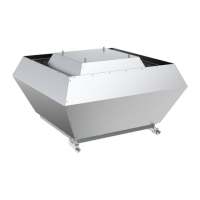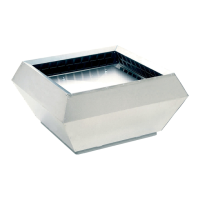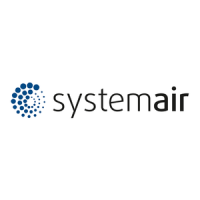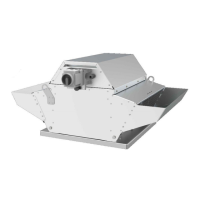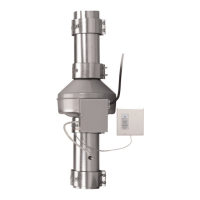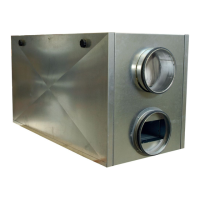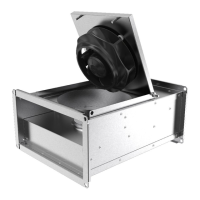Description
|
3
Caution: If transported without care during loading and unloading, the fan may be damaged.
♦ Load and unload the fan carefully.
♦ Use hoisting equipment that is suitable for the weight to be hoisted.
♦ Observe the transportation arrows on the packaging.
♦ Use the fan packaging exclusively as transport protection and not as a lifting aid.
Storage
♦ Store the fan in the original packaging in a dry, dust-free location protected against weather.
♦ Avoid the effects of extreme heat or cold.
Hazard due to loss of function of the motor bearing
♦ Avoid storing for too long (recommendation: max. 1 year).
♦ Check that the motor bearing functions properly before installation.
5 Description
5.1 Intended use
All roof fans
• The fans are intended for installation in ventilation systems. They can be installed both in duct systems and also
with free suction via an inlet cone and a suction-side contact protection grille. Systemair recommends a Back draft
damper (VKS) to avoid cold air intake at a standstill of the fan, see 7 Accessories, page 9.
• The fans are exclusively intended for extract air applications.
DVN, DVNI
• The fan is suitable for conveying contaminated air
(dust, kitchen exhaust).
DVS, DVSI, DVC, DVCI, DHS
• The fan is suitable for conveying clean air.
Incorrect use
Incorrect use refers mainly to using the fan in another way to that described. The following examples are incorrect
and hazardous:
• Conveying of explosive and combustible media
• Conveying of aggressive media
• Operation in an explosive atmosphere
• Operation without duct system or protection grille
• Operation with the air connections closed
5.2 Technical data
Max. ambient temperature [°C]
see data sheet, available in our online catalogue.Max. temperature of transported air [°C]
Sound pressure [dB]
Voltage, current, frequency, enclosure class, weight see name plate of the fan
The motor data can be found on the name plate of the motor, or in the technical documents of the motor
manufacturer.
The data on the name plate of the fan apply to "standard air" according to ISO 5801.
| 006
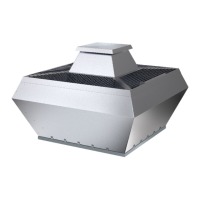
